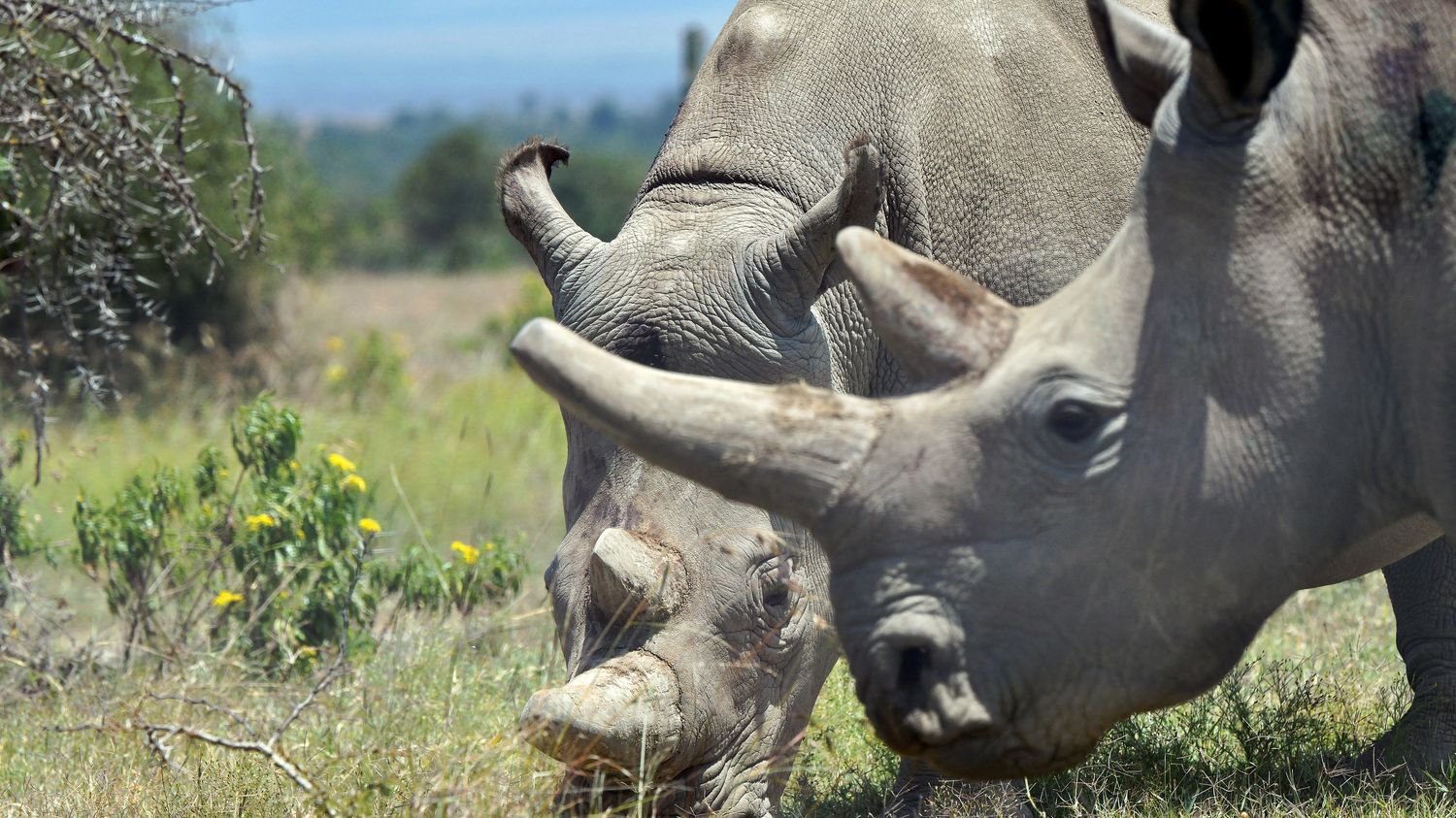Scientists announced successful IVF on a cousin species in September and believe they can reproduce this technique.
Published
Reading time: 2 min

A feat that could save an endangered species. Scientists announced on Wednesday January 24 that they had successfully carried out the first in vitro fertilization of a southern white rhino in September. This turning point brings hope in the race against time to save its close cousin, the northern white rhino, a species which only has two females and no males alive.
Although rhinos have very few natural predators, they have been decimated by humans since the 1970s. Too old, the last two female northern white rhinos, Najin and her daughter Fatu, are no longer capable of carrying a calf. term. The last male, named Sudan, died in 2018 in the Ol Pejeta reserve in Kenya, where Najin and Fatu live under constant surveillance to be protected from poachers.
In 2015, when the species was down to three individuals, a rescue strategy was developed by twenty scientists from around the world, meeting in Vienna (Austria). This is based on the in vitro fertilization of oocytes by injection of frozen spermatozoa, made possible by the combination of three techniques: medically assisted procreation, techniques associated with stem cells and the cryopreservation of gametes and samples. of skin from deceased individuals, details the BioRescue scientific consortium on its site.
Successful IVF, despite the death of the female
In September, the consortium, supported by the German Ministry of Research, successfully transferred two southern white rhino embryos into two female rhinos of the same species. One of the two transfers takes place, a first for a rhino.
Unfortunately, the pregnant female dies after 70 days of pregnancy, due to “bacterial infection unrelated to transfer”explain the researchers. “We achieved something that we thought was impossible”, nevertheless welcomes the head of the project, the German Thomas Hildebrandt, who spoke on Wednesday at a press conference in Berlin. By proving that pregnancy via in vitro fertilization was possible in rhinoceroses, scientists have regained hope that this technique can be replicated with a northern white rhino embryo, to save this subspecies.
“Sperm injection, fertilization, liquid nitrogen, thawing: all of this had never been done before for rhinos. All of this could have failed.”
Thomas Hildebrandt, BioRescue project leaderduring a press conference in Berlin
The next stage of the consortium’s breeding program, in May or June, will see scientists attempt the feat with a northern white rhino embryo, implanted into a southern white rhino surrogate mother, the two species being closely related.
Thomas Hildebrandt’s team hopes “produce northern white rhinos in the next two and a half years”. However, according to the latter, it could be that the process takes longer, with pregnancy in a rhino lasting sixteen months. The icing on the cake: this technique could be used to preserve other endangered rhino species, such as the Sumatran rhino, in Southeast Asia.
